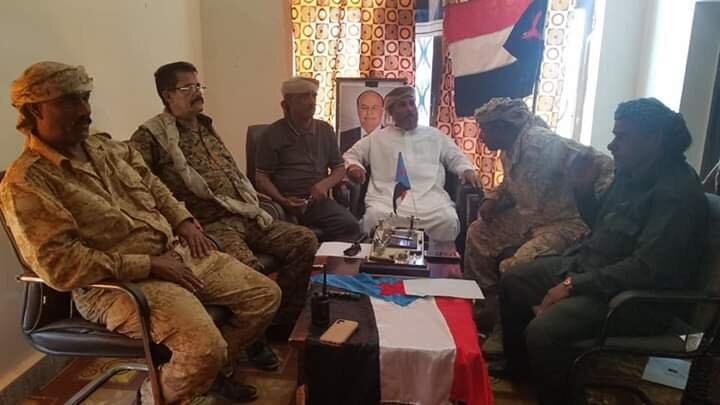Socotra Switches Hands in a Bloodless Coup
Socotris gather in front of a government office in Hadibo with South Yemen and UAE flags in a sign of support for the coup lead by the STC ousting the island’s Yemen government-backed governor.
SEPARATIST STC FORCES TAKE CONTROL
The Yemeni island of Socotra has just experienced another quick and bloodless change in local politics. Reports have started pouring out from the island over a political coup. We can confirm southern separatist forces have taken control over government and security offices on the island based on reports from our sources on the ground in Socotra this morning.
The Southern Transitional Council (STC) declared self-rule in former South Yemen in April from their base in Aden, and while they do not actually control much territory, they are particularly influential in Aden and Socotra.
Ramzi Mahroos, the deposed governor of Socotra fled by boat to the southern mainland Yemen region of Al Mahrah two days ago and has now supposedly ben resettled with family in Oman. He accused coalition leaders Saudi Arabia and the United Arab Emirates of turning a blind eye to the take over. The UAE has previously backed STC forces with air strikes in fighting against the government in the south, while the Saudis have been normally opposed to, yet tolerant of, the STC, as long as they do not come into conflict with the Saudi-backed government of Abdrabbu Mansour Hadi.
However, this time the Saudis have a possible incentive from turning a blind eye against the Socotri governor— with quiet accusations that the governor has benefitted from aid from Qatar and Oman. Two factors that make the Kingdom uncomfortable.
Both Saudi and UAE security forces remain on the island, despite the quick change in local politics.
Life on the streets of Hadibo, Socotra’s capital city.
HOW POPULAR IS THIS MOVEMENT
It is worth noting the STC remains popular in Socotra, due to the island’s unique history, culture, and Abu Dhabi’s soft-power maneuverings— mostly in the form of humanitarian and developmental aid. This, coupled with a general dislike of the now deposed governor, have made this move a welcomed change by many people in Socotra.
Socotra was an independent sultanate along with the Mahrah region of southern Yemen, forming part of the British Protectorate of South Arabia. In October 1967, in the wake of the departure of the British from Aden and southern Arabia, the Mahra Sultanate of Qishn and Socotra, as well as the other states of the former Aden Protectorate, were abolished. On 30 November of the same year, Socotra became part of South Yemen, the result of a merger between the former Protectorate of South Arabia and Federation of South Arabia. Socotra did not become a part of the Republic of Yemen until the 1990 unification.
The Southern Transitional Council theoretically supports the restoration of the Sultanate and the redivision of Yemen along the pre-1990 North-South line— a view that is in line with many opinions in Socotra who simply wish to be left alone.
There is little wonder why former South Yemen and UAE flags can be seen throughout villages and towns in Socotra— a combination of UAE’s soft-power approach to the island and the influence of somewhat separatist desires amongst the population, given the continued conflict in Yemen’s mainland. While the conflict has not spilt over to the island, the economic effects have been harmful to the island’s 70,000 inhabitants.
STC coup leaders sit in the Governor’s office after seizing control, holding flags of South Yemen, the UAE and portraits of the Saudi-backed President Hadi.
WHAT’S NEXT
It’s unclear what will happen moving forward. A new governor will likely be announced soon, once the nod has been given from the STC government in Aden. The Saudi-backed Hadi government is not happy with these events, having labeled the action a “full-fledged” coup, and accused STC forces of taking over government buildings in “gang-style behaviour”.
The STC in Socotra have stated they have no issue with the Hadi government, and photos released show STC officers in the Governor’s office holding portraits of President Hadi along with the UAE and South Yemen flags. Their gripe was with the former Governor of the island and his political party, adding more complexity to the political conflict in Yemen.
As is common with politics on this little island, things change quickly and they are almost never violent. We’ll post new information as we receive it.



